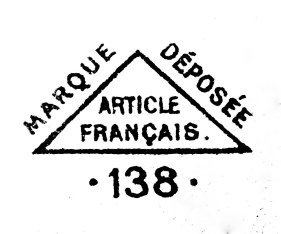The history of Fernand Martin toy manufacturer in Paris.
Part one: The first Period.
This article is published in the September 2020 issue of the ATW Antique Toy World magazine. https://antiquetoyworld.com/about-atw/
In the most relevant books about Fernand Martin are the toys that are made by Martin and his successors divided into four periods.
According to the latest state of insight, these periods might be classified as follows
Period 1 from 1878 – 1894
Period 2 from 1895 – 1912
Period 3 from 1912 – 1919
Period 4 from 1919 – 1933
The first period from 1878 – 1894 :

His full name was Séraphin Fernand Martin and born in the French village Amiens.
Fernand Martin lived from 1849 to 1919.
Martin was an inventor, mechanical engineer and manufacturer of mechanical toys in Paris.
He started as a small manufacturer and street vendor of artificial flowers, he made and sold these cloth flowers for many years but he certainly did not earn a good income with it.
He married with Marie Bickel and in 1872 they have a son Maurice.
But the brains of Fernand Martin were working hard and in 1878 he created his first toy, “Poisson Nageur” the swimming fish with a, for that time, very cheap and ingenious drive consisting of a “rubber band” mechanism.


As clever as he was, he patented this invention and quickly sold this patent to Cremer toys 210 Regent Street London England.

With the proceeds he was able to start up his first factory in 1880 and from that moment on he could start producing more and in larger numbers.
He started in 1880 with 12 employees and in 1888 there were about 300 employees.
Martin spent his life with his thoughts on toys, when he saw a special scene ore person along the way, he started to think whether it could be converted into a piece of children’s toys.
You can clearly see that in all his work, they reflected the daily life and in particular scenes of children and working people in mainly France and in particular Paris.

If you now look in history books at pictures from that period, you will also see in many objects the unity with his toys from that period.
During this first period Martin made at least about 47 (presumably many more) different toys, the exact number is still not known exactly because not every toy is numbered yet and he also often made toys on behalf of customer request, so toys that are not in his regular production was produced.
Here we are still looking for more clarity, fortunately after deep research new facts regularly pop up.
His earlier mentioned invention of the “rubber band” mechanism was used in most of his toys from this first period, he also used the “flywheel” mechanism and at the end of this first period, the “clockwork” mechanism .
After 1897 he no longer used the “rubber band” mechanism.

He started in 1880 his first factory at 90 Boulevard de Menilmontant Paris in the 20th arrondissement, nearby the world’s most famous cemetery “Père-Lachaise”.
Due the commercial succes of the “Petit Garçon Livreur” (the delivery boy) in 1888, Martin has now the money to buy a new building to expand his factory.
We know this toy as the “Le Livreur”
In 1892 he bought the adjacent building number 88 and after a complete renovation / rebuilding, the factory was expanded considerably as a result, and was, for that time, a revolutionary conception.
This location is where the first period started and in 1934 the last period of its history ended here with the relocation of the Victor Bonnet production facility.

Martin became a respected citizen and has done a lot for the toy industry.
He joined the “Chambre Syndicale des Fabricants de Jouets & Jeux” in Paris in 1886.
In 1892-1893 he became Vice President and in 1893-1894 he was President.

Martin places his logo on most of his toys, first a circle with the letters FM and later with the addition the text Brevete S.G.D.G. (Sans guarantee du gouvernement).
Around the circle was usually but not always the text Marque Deposee.

From 1897 he also placed the famous triangle with the text “Article Francais” and around it the text “Marque Deposee” and under the triangle a number, this triangle sign was granted from the “Chambre Syndicale des Fabricants de Jouets & jeux” to French toymakers.
This number was different per manufacturer.
Martin was given the number 138, so if you see the triangle with a different number underneath, then it is also a different manufacturer and for 100% no Martin.

In 1895 he started making toys in a larger size, this was the beginning of his second period with his “Bonshommes de Paris”.
Blog: www.fernandmartintoys.nl
To be continued
